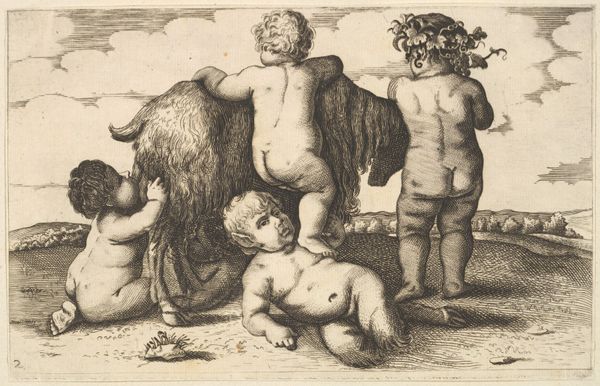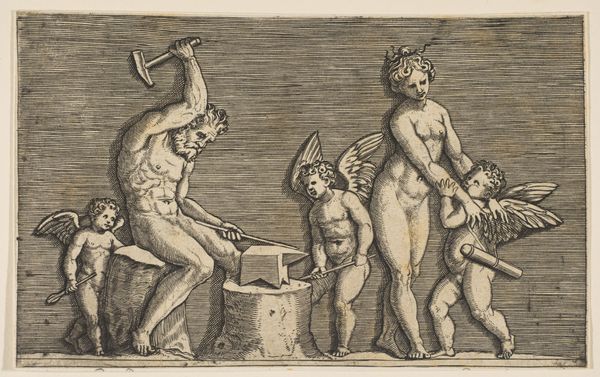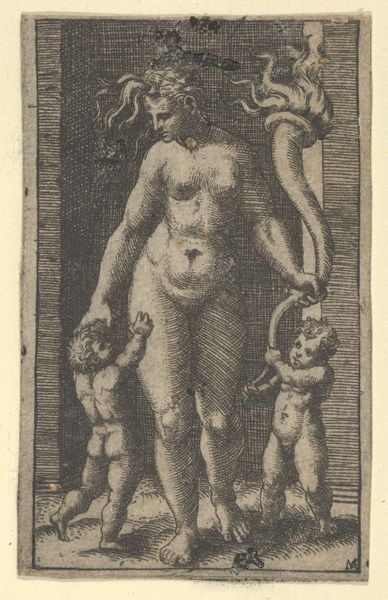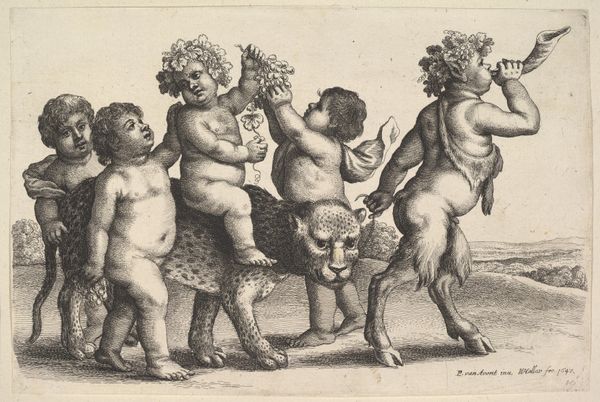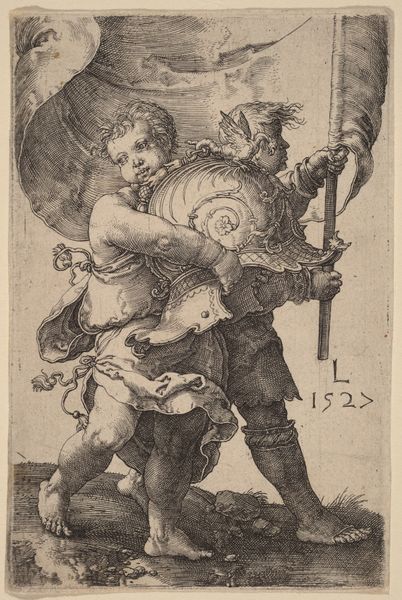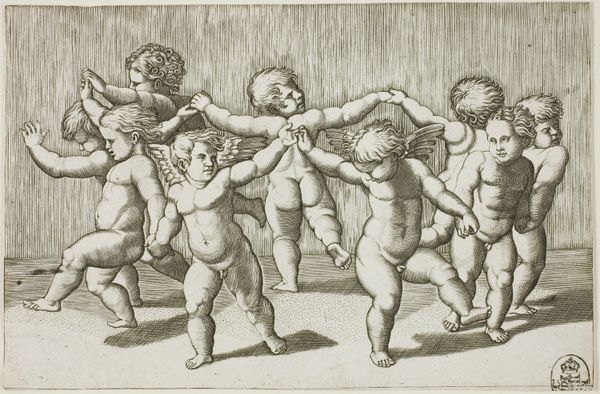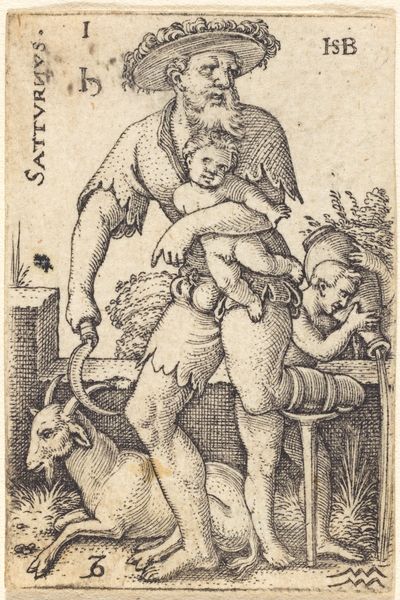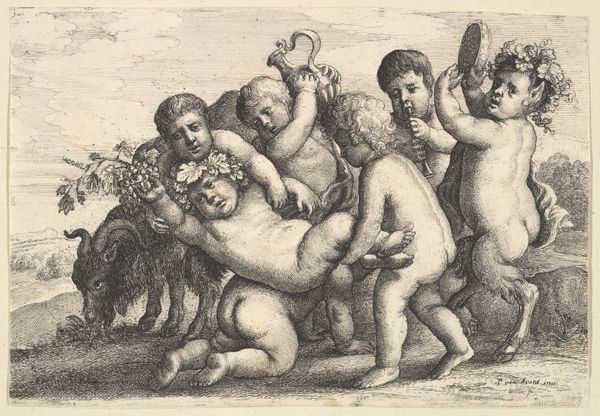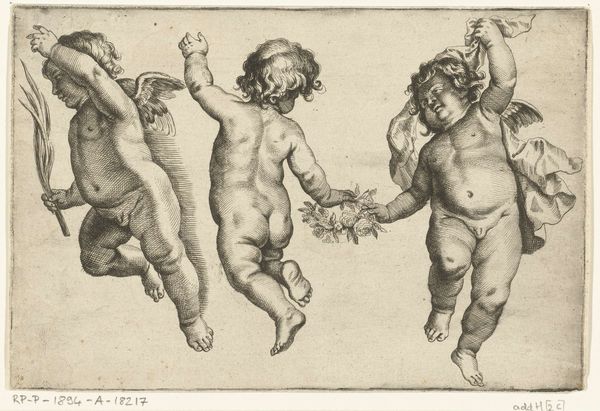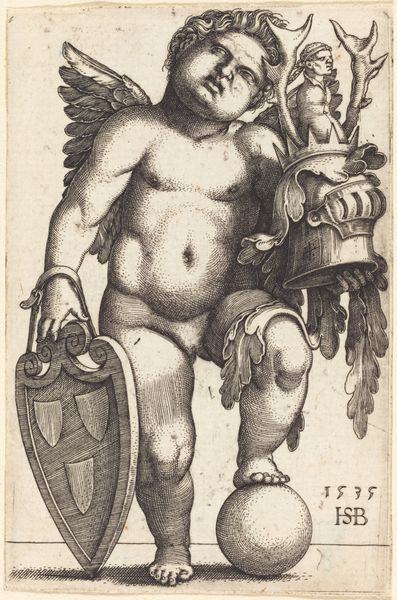
drawing, print, engraving
#
drawing
#
allegory
# print
#
figuration
#
11_renaissance
#
history-painting
#
northern-renaissance
#
engraving
Dimensions: Sheet: 4 7/16 × 2 3/4 in. (11.3 × 7 cm)
Copyright: Public Domain
Curator: This engraving, dating back to around 1500, is titled *Three Putti with Trumpets*, and it comes to us from the hand of Albrecht Dürer. What are your initial thoughts on this early print? Editor: It strikes me as oddly… bombastic, but in miniature. There's a pronouncement happening, right? But from cherubic figures? It's a curious combination. I immediately wonder what these putti are proclaiming and why. Curator: Considering its context, we have to recall that the Renaissance marked a revival of interest in classical antiquity, including its mythologies and artistic motifs. Putti, these winged child figures, were popular in Roman art and were then revived in the Renaissance. Dürer's Germany was deeply engaged with these trends. Editor: So, not just decorative cherubs then. How did Dürer engage with those classical influences and perhaps transform them through a contemporary lens? What exactly was he using the putti to say in a historical sense? Curator: Dürer, with his meticulous detail characteristic of the Northern Renaissance, wasn't simply copying classical forms. He was appropriating a familiar motif and potentially reinterpreting it. The putti hold a blank escutcheon, it is theorized that this piece may have been intended to accompany a family crest or perhaps used to represent imperial or state authorities. Editor: It is an almost militaristic image, then, with trumpets, announcing some patron's power. But is it celebration or just display? Does it reinforce existing hierarchies? The Renaissance was complex with new social mobility and even challenges to the social order in ways art has yet to fully contend with at this moment. Curator: Precisely, and the political climate of the Holy Roman Empire in 1500 was turbulent. There were debates around imperial authority. Art often reflects these contestations of power. By embedding classical imagery in these pieces, it’s almost certainly part of a dialogue about governance. Editor: It would be fascinating to explore what role images like these play in building collective identity, legitimizing authority and maybe even stoking conflict through these ornate symbolic performances. I also have to wonder what an artist known to self-promote might have been attempting with his art in this period. Curator: Dürer certainly leaves us with more questions than answers in the nuances of his work. Thanks for considering those wider possibilities with me. Editor: My pleasure. The act of viewing through a critical lens reveals dimensions that are easily missed.
Comments
No comments
Be the first to comment and join the conversation on the ultimate creative platform.
